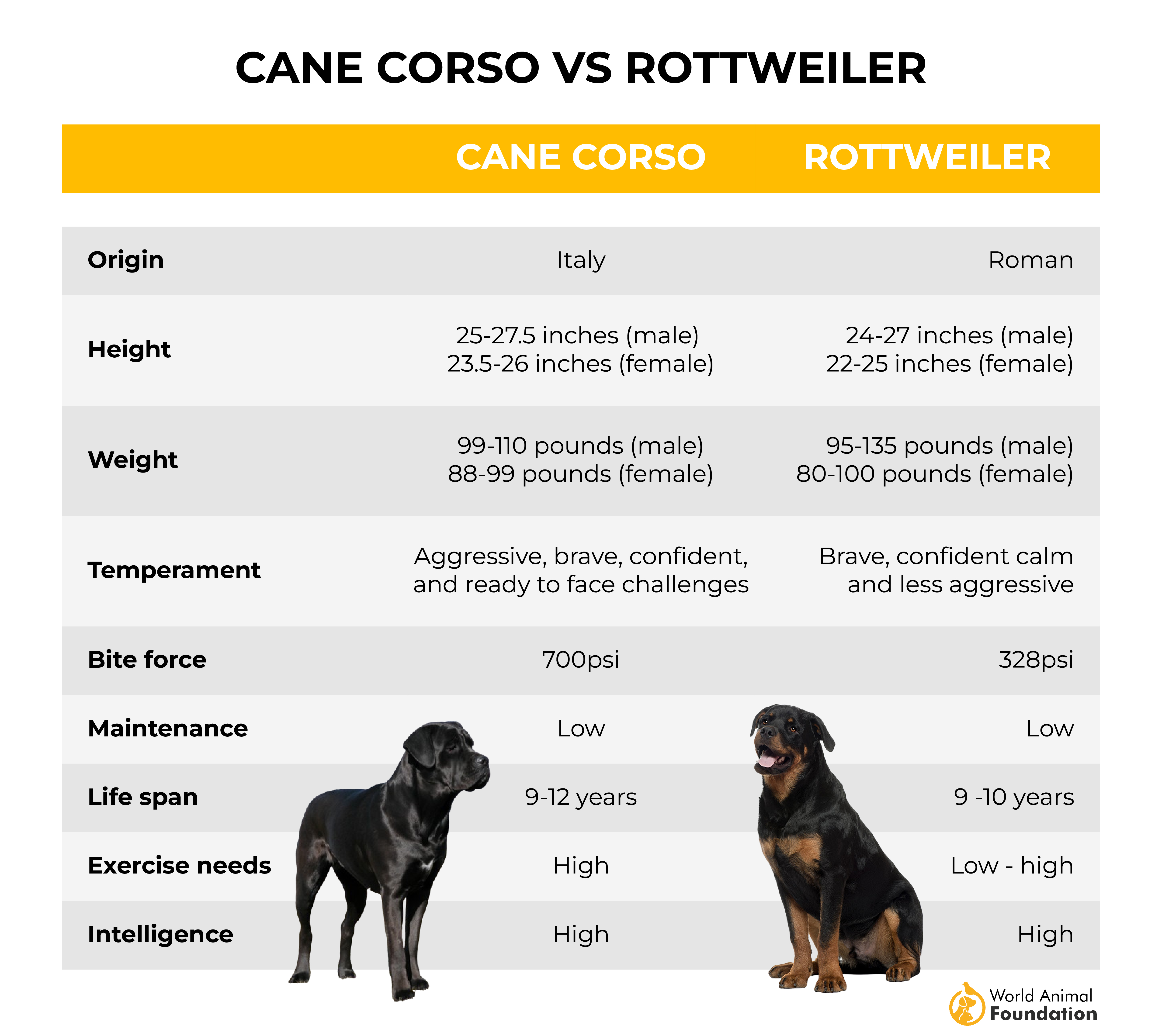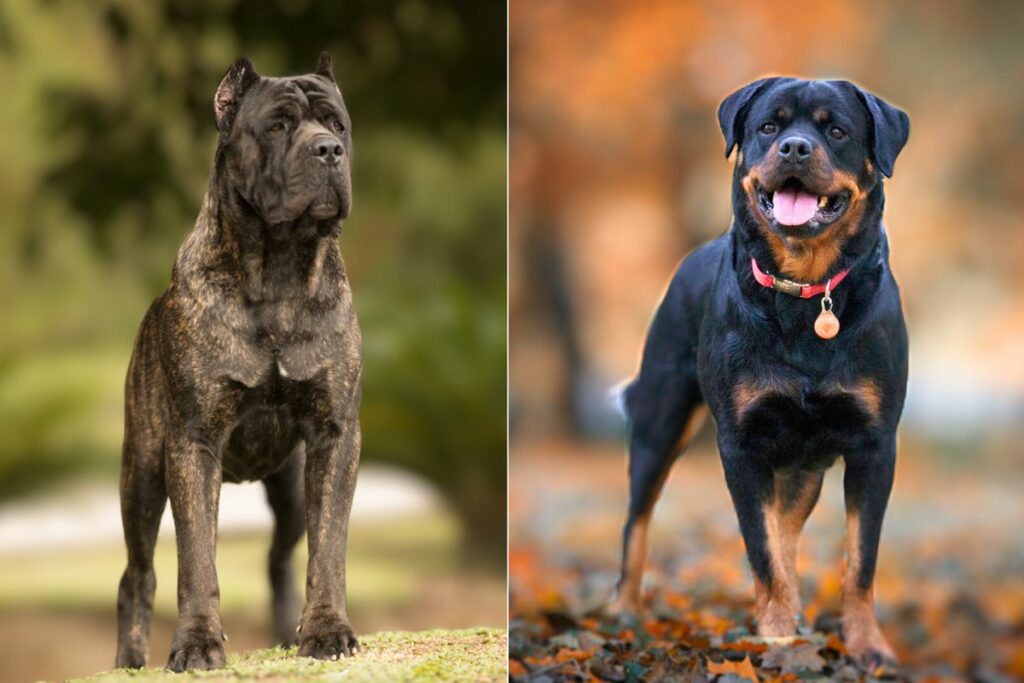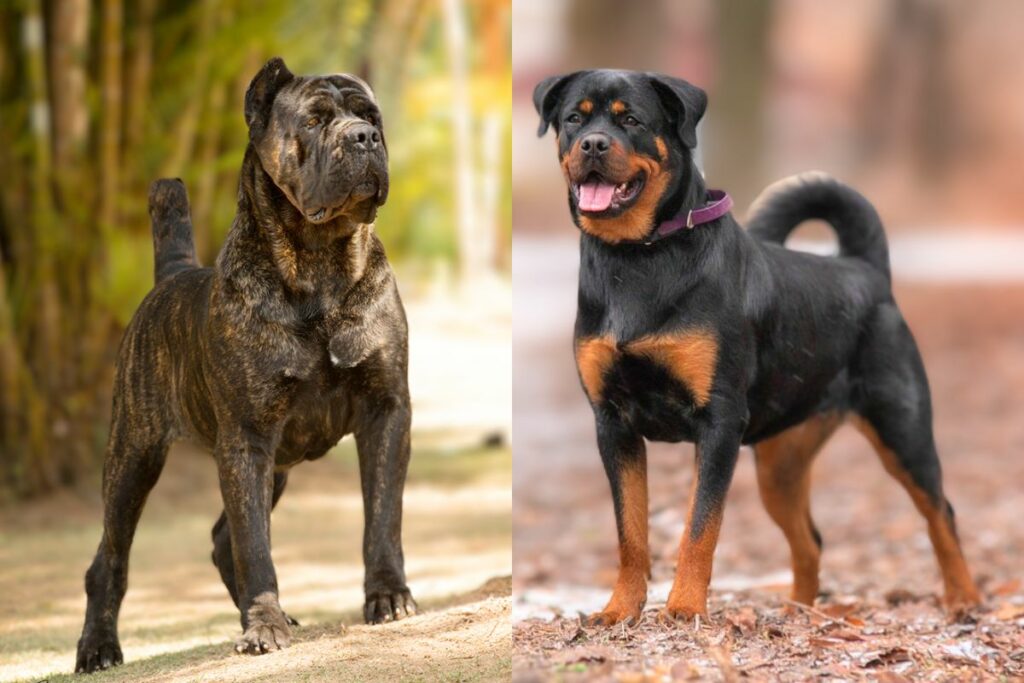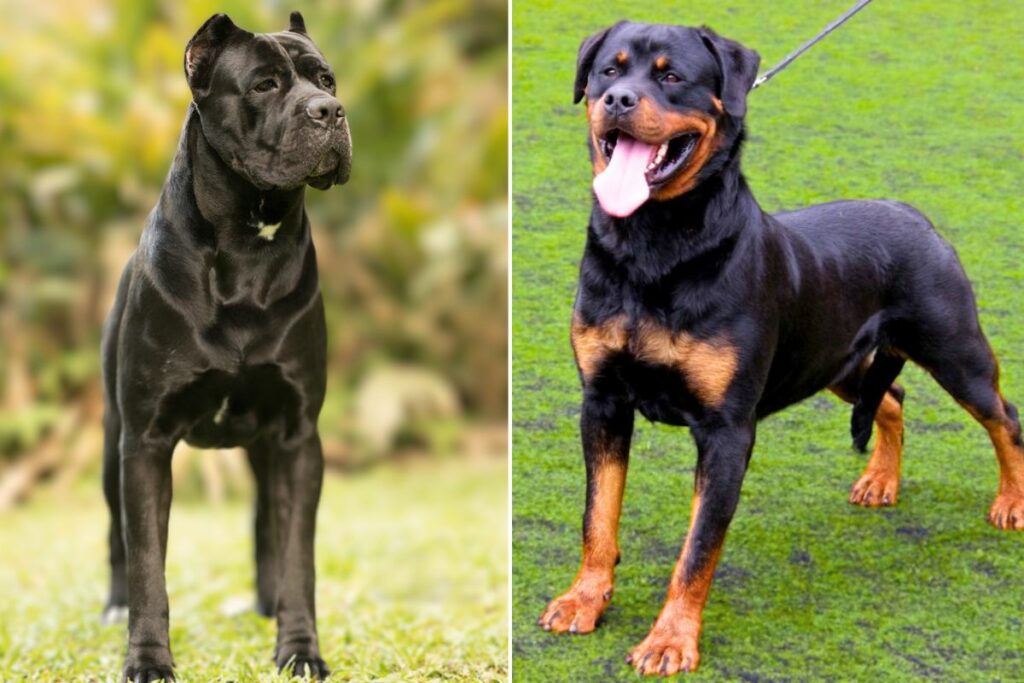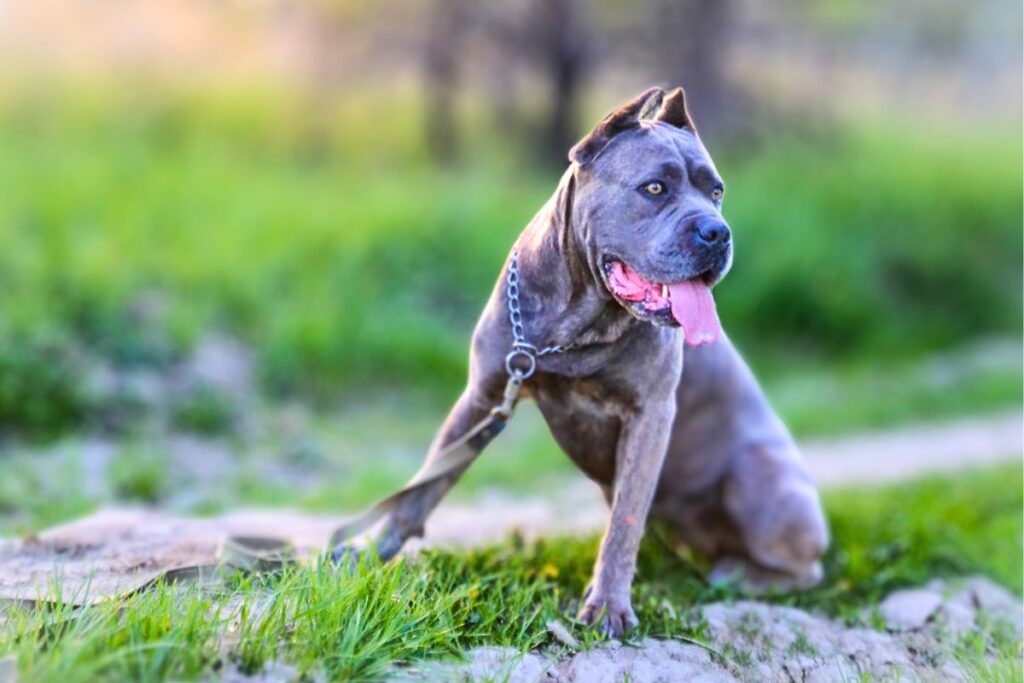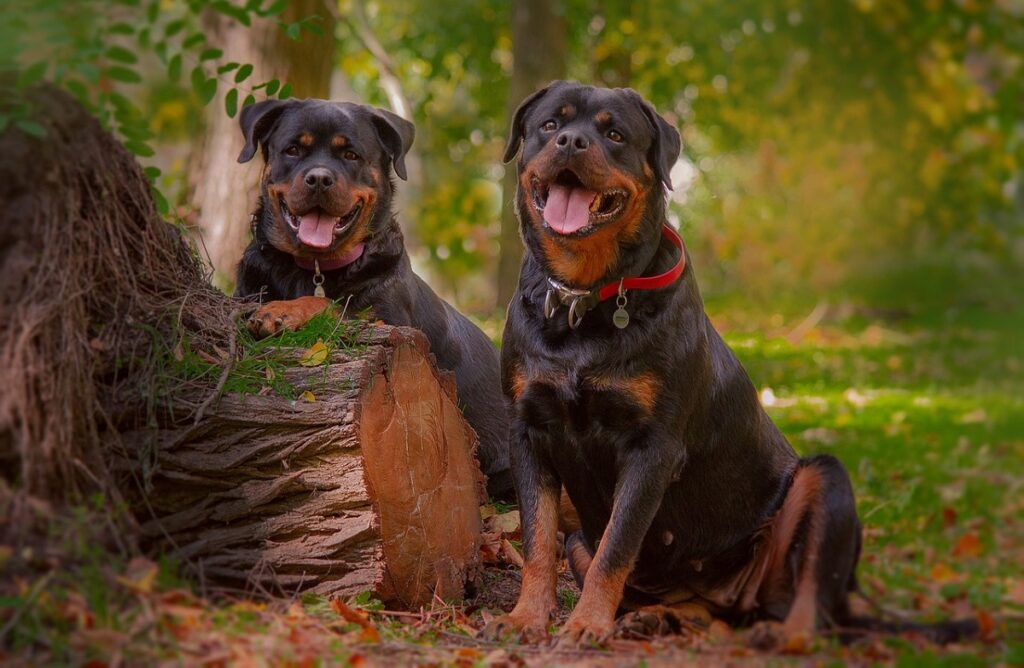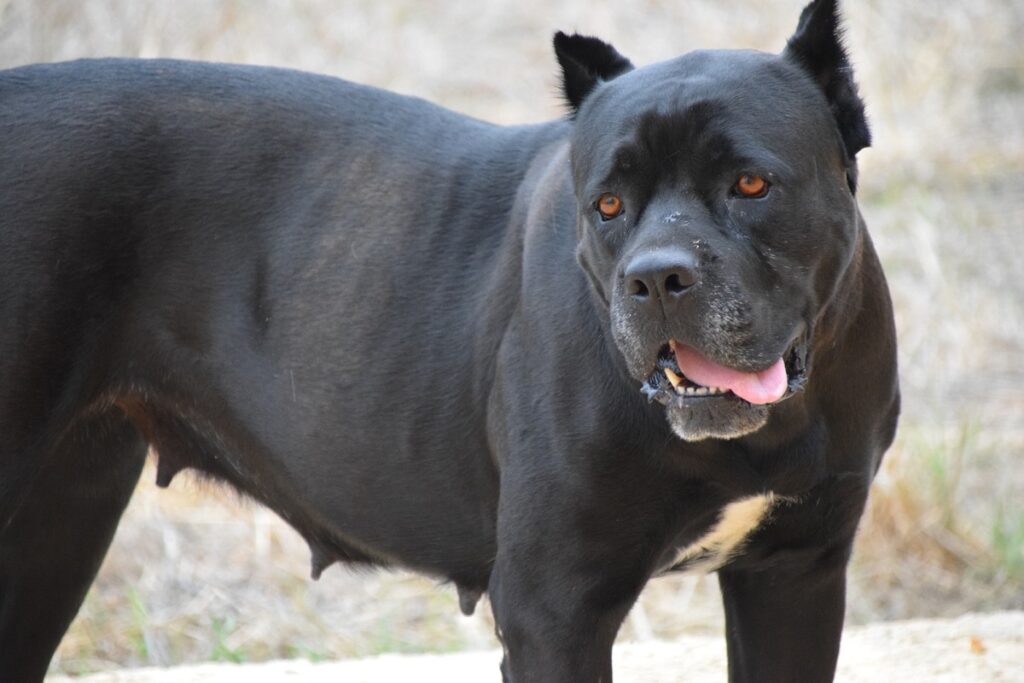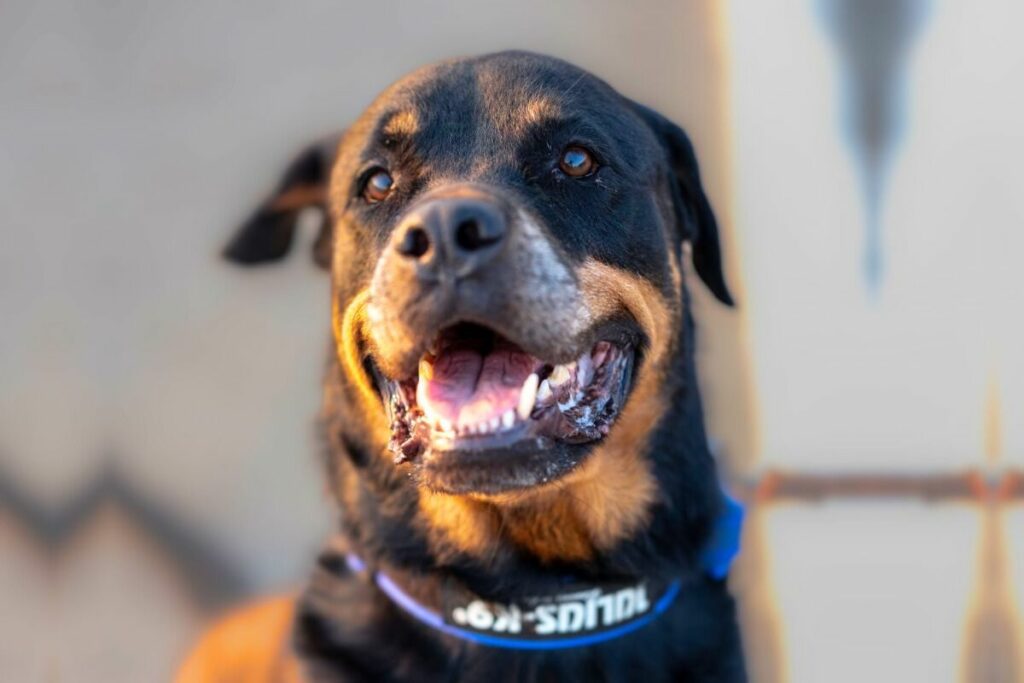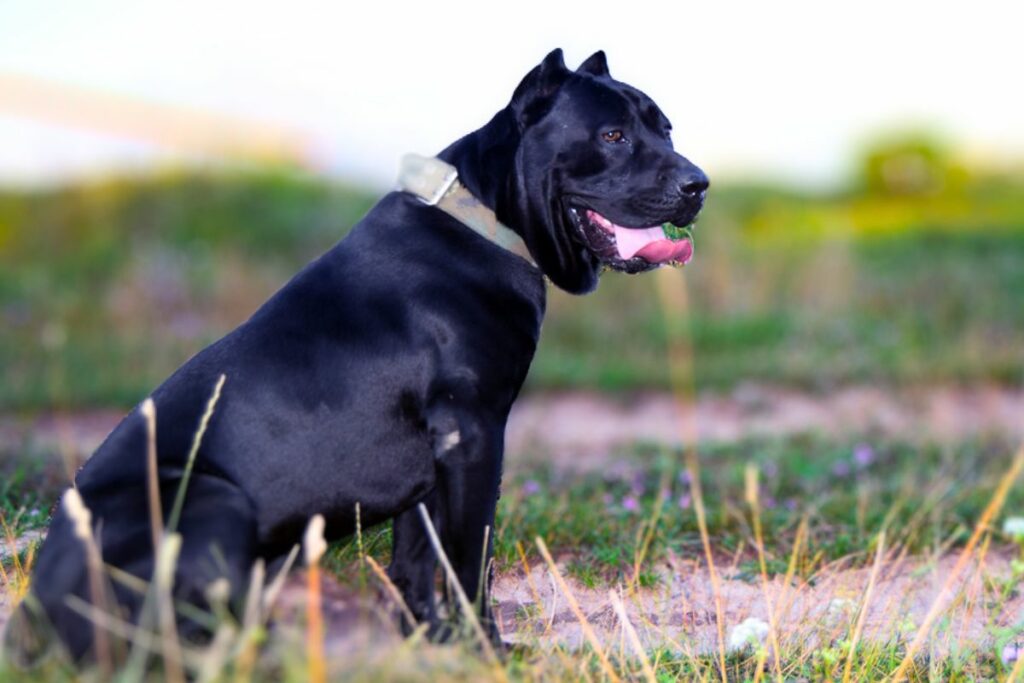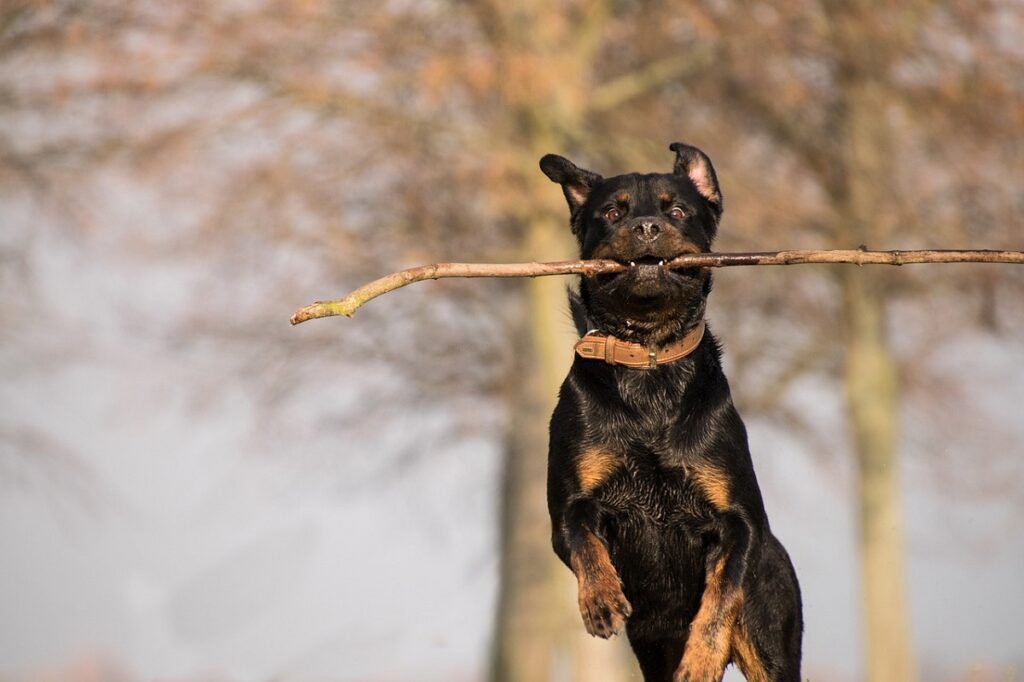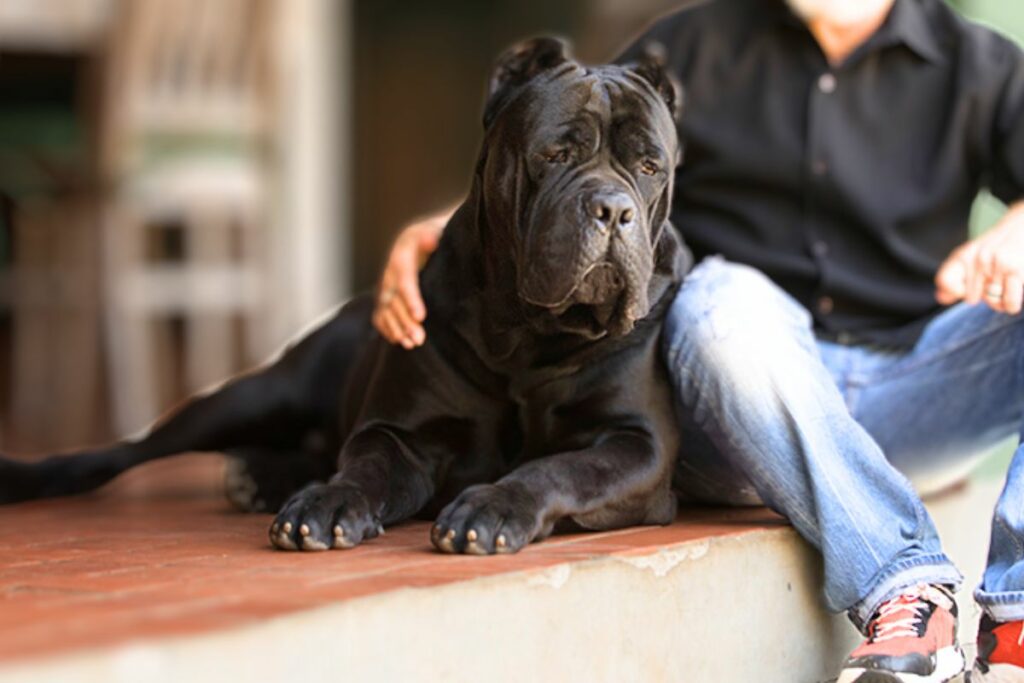Choosing the right guard dog requires careful consideration, and the Cane Corso and Rottweiler often top the list. Both breeds boast imposing physiques and protective instincts, but their temperaments and needs differ significantly. This guide delves into a detailed comparison of the Cane Corso and Rottweiler, exploring their guarding styles, training requirements, exercise needs, and family compatibility. By understanding the nuances of each breed, you can confidently determine which powerful protector is the perfect fit for your lifestyle and family dynamic.
When you’re torn between a Cane Corso and a Rottweiler, you’re essentially choosing between two giants of the dog world! Both breeds hail from a long lineage of Mastiffs, marking them as not just large but full of character.
Though they might share some ancestral traits, the Cane Corso and the Rottweiler stand apart in looks, personality, and temperament, each bringing its own flair to the table.
Choosing the right companion between a Cane Corso and a Rottweiler boils down to which breed aligns with your lifestyle and family dynamics. It’s crucial to dive deep into what makes each of these dogs special to discover which could become your perfect pet.
Remember, it’s our responsibility to ensure they live the happiest and fullest life possible. Let’s explore what sets these two powerful breeds apart and see which one might be the best fit for you.
Table of Contents
- Cane Corso vs. Rottweiler
- Cane Corso vs. Rottweiler: Origins
- Cane Corso vs. Rottweiler: Breed Overview
- Cane Corso vs. Rottweiler: Height and Weight
- Cane Corso vs. Rottweiler: Temperament
- Cane Corso vs. Rottweiler: Strength and Bite Force
- Cane Corso vs. Rottweiler: Maintenance
- Cane Corso vs. Rottweiler: Health and Exercise Needs
- Cane Corso vs. Rottweiler: Intelligence
- Are Cane Corso and Rottweiler Family Dogs?
- Conclusion
Cane Corso vs. Rottweiler
We’ve already stated that both the Cane Corso and the Rottweiler are large breeds. Despite their size and common ancestry, that’s where their physical similarities largely stop. Now, let’s dive into the distinct characteristics that set the Cane Corso apart from the Rottweiler!
Cane Corso vs. Rottweiler: Origins
The Cane Corso hails from Italy, tracing back to the fierce Roman war dogs. These powerful creatures are descendants of the Molossus, a now-extinct mastiff-type breed.
Over time, the Cane Corso was developed into an all-around farm dog, known for its guarding skills and prowess in hunting, making it a cherished companion for those in rural areas.
On the other hand, the Rottweiler boasts a rich history that dates back to ancient Roman times. Originally bred to be robust working dogs, they played crucial roles alongside Roman legions, pulling carts, herding cattle, and guarding encampments as they traversed the rugged terrain of the Alps.
This enduring breed has maintained its status as a loyal and protective companion through the centuries, adapting to various roles in modern society.
Cane Corso vs. Rottweiler: Breed Overview
The Cane Corso is a strong and muscular breed known for its power and strength. They boast long legs and a slender frame covered with short fur that doesn’t shed much.
These dogs often come in four recognized colors, sporting a broad, mastiff-type head with long ears—which are sometimes cropped—and noticeable lower jowls. You might also spot white patches on their chest or lighter shades near their mouth.
On the flip side, Rottweilers share the mastiff-like head and distinct lower jowls but differ with their long, naturally high-set ears and typically docked tails for those shown in competitions. Their coats, which can be either short or long, shed moderately depending on the weather.
Rottweilers are known for their glossy black coats with standard tan markings, which include:
- “Eyebrow” spots above each eye
- A mask covering the nose and mouth
- A tan patch stretching from the neck to the chest
- Tan markings on the underbelly
Cane Corso vs. Rottweiler: Height and Weight
The Cane Corso and the Rottweiler are both large dogs. Male Cane Corso dogs are usually 25-27.5 inches tall and weigh about 99-110 pounds, while females are slightly smaller at 23.5-26 inches tall and weigh 88-99 pounds.
Rottweilers are similar in size. Male Rottweilers grow to be about 24-27 inches tall and weigh 95-135 pounds, and female Rottweilers are 22-25 inches tall and weigh 80-100 pounds.
Cane Corso vs. Rottweiler: Temperament
Cane Corsos have a temperament that divides opinion. They’re known for their bravery, confidence, and readiness to face challenges, traits that sometimes lead to them being labeled as aggressive. However, this aggression is usually justified and occurs mostly when the dog isn’t trained or treated properly.
With the right owner, Cane Corsos are generally well-behaved and still perform their guard dog duties when necessary. They’re appreciated for their loyalty and protective nature, ready to defend their family if the situation calls for it.
Despite being guard dogs, Cane Corsos are relatively quiet, and while they might not be as affectionate in the traditional cuddly way, they deeply value social interaction and show love in their unique manner.
Rottweilers share many qualities with Cane Corsos but stand out due to their higher energy levels and more outgoing personalities. They’re ideal for active families with children, demanding both time and energy from their owners.
Rottweilers are slightly less aggressive than Cane Corsos but still require thorough training and socialization to foster their natural guard dog instincts in a positive direction.
Often referred to as “Gentle Giants,” Rottweilers may look intimidating but are incredibly sweet-natured. They’re brave and confident yet calm and tend to mirror their owner’s response to new people, showing aggression only when necessary.
Rottweilers are very sociable, enjoying the company of people and other pets, and are more likely than Cane Corsos to seek out affection and play, even with strangers.
A notable trait of these breeds is how they communicate. Rottweilers, for instance, are not particularly prone to barking excessively. However, they produce a distinctive deep, rumbling sound, similar to a growl, that owners affectionately refer to as “Rottie rumbling.”
Cane Corso vs. Rottweiler: Strength and Bite Force
The Cane Corso is known for being one of the most powerful dog breeds, boasting a formidable bite force and a more muscular physique compared to many others. This breed’s dominance means it’s better suited for those with experience in handling strong dogs. It’s crucial for owners to be confident and assertive to establish leadership with a Cane Corso.
Both the Rottweiler and the Cane Corso have impressive bite forces, a testament to their strong origins. However, the Cane Corso’s bite force significantly surpasses that of the Rottweiler, measuring around 700psi compared to the Rottweiler’s 328psi. This might make the Rottweiler a more appealing option for those less familiar with managing large, powerful breeds.
Cane Corso vs. Rottweiler: Maintenance
Caring for both Cane Corsos and Rottweilers is quite straightforward, as they have short coats that don’t require regular haircuts, making them ideal for those looking for a low-maintenance pet. Regular dental care, nail trimming, and occasional brushing are the main grooming tasks needed.
A common question is about shedding. Yes, Cane Corsos do shed, but not excessively. Rottweilers tend to shed a bit more, but since their coats aren’t very dense, it’s usually manageable. For those concerned about pet hair, the shedding of both breeds should be relatively easy to handle with regular grooming.
Cane Corso vs. Rottweiler: Health and Exercise Needs
Cane Corsos are generally healthy and low-maintenance in terms of care, but they do need plenty of exercise—about an hour daily—due to their working dog background. However, it’s important to exercise them gently to avoid issues like dysplasia.
Light, frequent activities are ideal for keeping them fit without harming their joints. They also need mental challenges to prevent boredom and destructive behavior.
Rottweilers have similar care requirements to Cane Corsos, but they need even more physical activity and mental engagement. This breed thrives on plenty of outdoor time and enjoys obedience training, which helps keep them physically and mentally sharp.
Cane Corso vs. Rottweiler: Intelligence
Both Cane Corsos and Rottweilers are smart breeds, but Rottweilers often rank among the top ten most intelligent dogs in surveys. This means Rottweilers may learn new tasks quicker and be easier to train compared to Cane Corsos. However, both breeds can show a stubborn streak, possibly ignoring commands if they’re not interested.
Consistent training and socialization are crucial for both breeds to manage any potential aggression. Early interaction with other dogs and people is important to ensure they grow up to be well-behaved adults. Given their origins as guardians and working dogs, they both have a strong capacity for obedience.
Are Cane Corso and Rottweiler Family Dogs?
Cane Corsos are great for families, especially those who are active and want both a companion and a guard dog. However, they’re not the best match for households with young children due to their reserved nature, but with proper training and careful supervision, it can work. They might not be ideal for homes with other pets because of their high prey drive.
Rottweilers, on the other hand, are affectionate family protectors. They alert you to newcomers without being overly aggressive, and they’re particularly gentle with children, acting as protective companions.
Despite their size, they’re known to be careful around kids but require training to ensure they don’t accidentally cause harm due to their strength. Rottweilers are generally good with other pets, thanks to their lower prey drive, but again, training and socialization are key.
Both breeds need supervision around children to prevent any accidents. Rottweilers tend to be more adaptable to living with kids and other pets. With the right training and care, both Cane Corsos and Rottweilers can become devoted family members.
Conclusion
Cane Corsos are great for active families who spend a lot of time at home. They can be around children if properly trained and socialized due to their reserved nature. However, they’re not ideal for apartment living, frequent travelers, or homes with other pets unless you’re ready to invest in training.
Rottweilers fit well with energetic people who have time for exercise and training. They need space but can get along with kids and other pets if socialized correctly. They’re not suitable for apartments or for those away from home often. Be prepared to engage in daily playtime with a Rottweiler.
No matter if you choose a Cane Corso or a Rottweiler, it’s crucial to train and socialize them well. Proper training is key to ensuring that either breed becomes a gentle and protective member of your household.
Choosing between a Cane Corso and a Rottweiler requires careful consideration of your lifestyle and experience. Both are powerful breeds with guarding instincts, but the Cane Corso’s independence and wariness of strangers contrasts with the Rottweiler’s more playful and potentially more adaptable nature. If you are a first-time owner, the Rottweiler’s eager-to-please temperament might be easier to manage with proper training. However, if you seek a stoic and imposing guardian and possess experience with dominant breeds, the Cane Corso might be the better fit. Ultimately, extensive research and meeting individual dogs are crucial for making the right decision.


